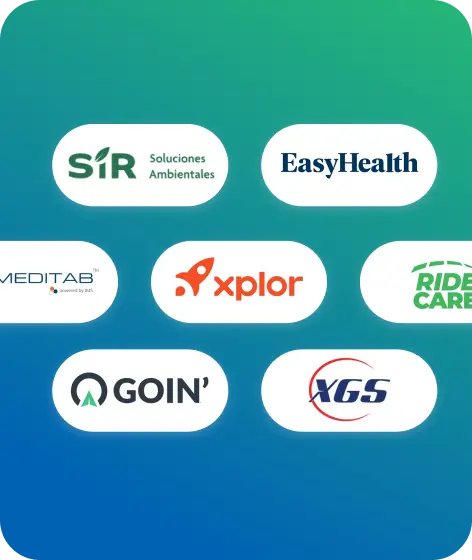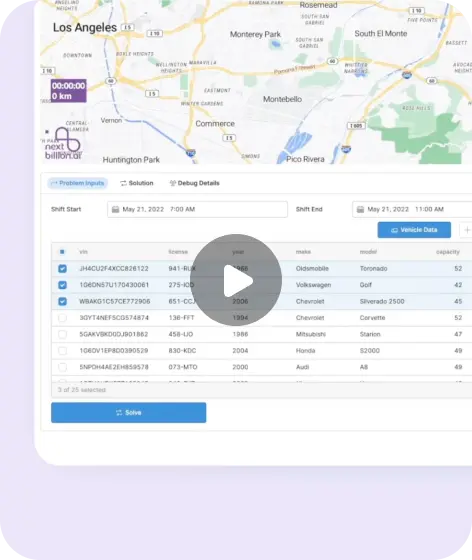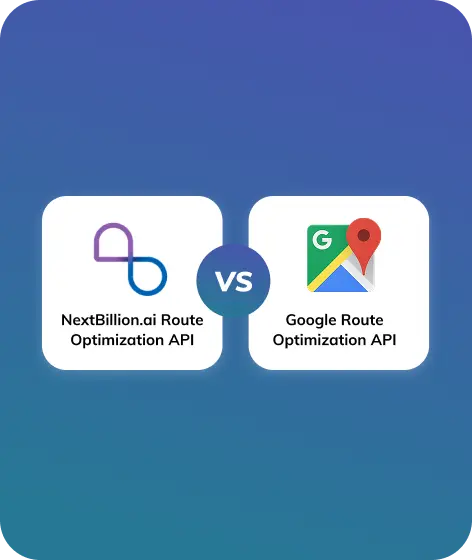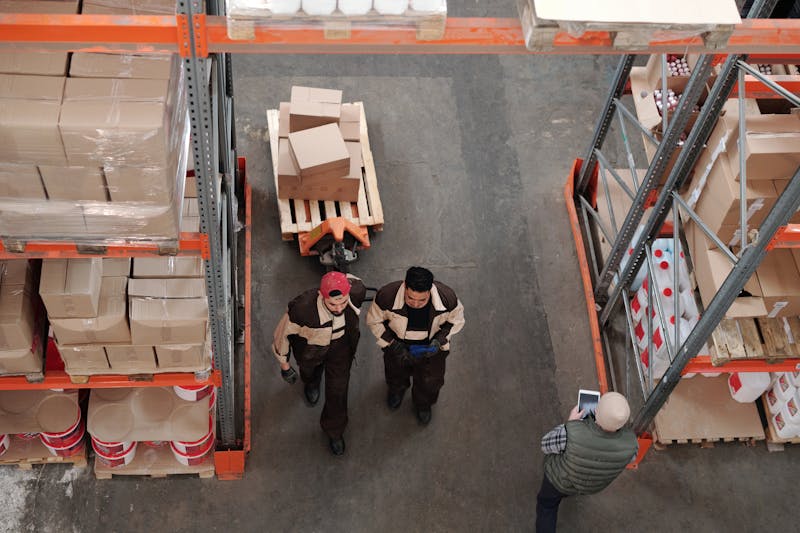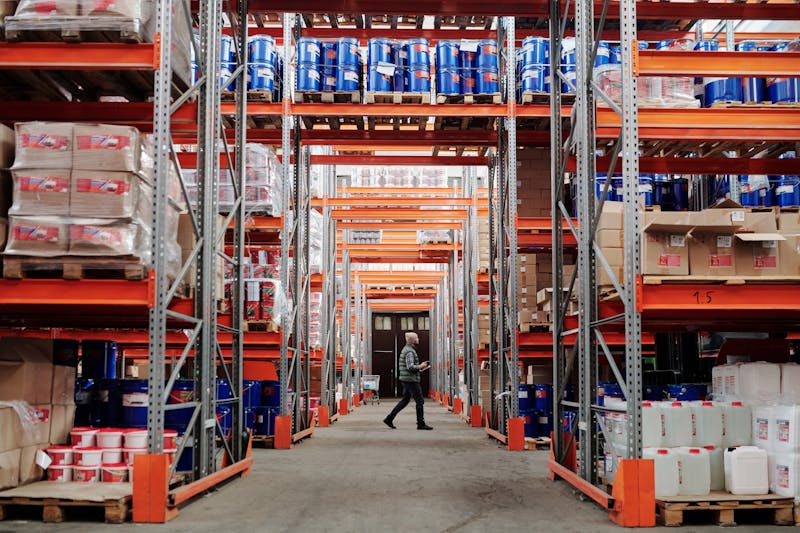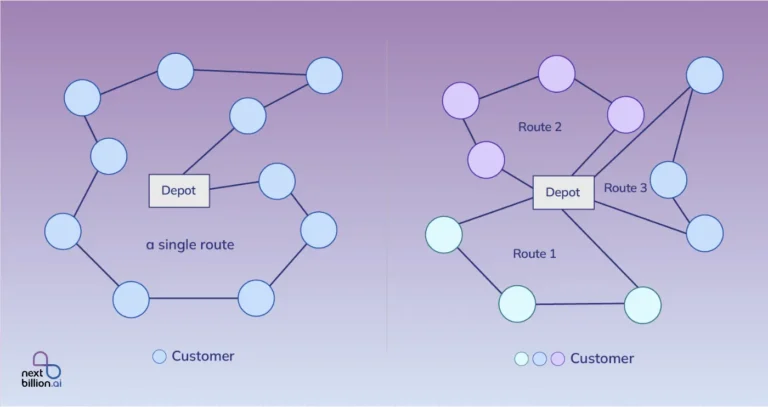
Table of Contents
Are you even aware that 79% of top-performing companies attribute their success to consistently using Key Performance Indicators (KPIs) to optimize their logistics operations? Well, in the present business world, companies are racing to meet deadlines. They are striving hard to fulfill obligations, and deliver results, often on a first-come, first-served basis. As businesses strive to stay ahead, they are realizing that the key to complete success is in the seamless integration of streamlined logistics. And, with the right KPIs in place, logistics managers can drive profitability. They can level up customer satisfaction, and streamline processes across the board.
Metrics such as warehouse efficiency, transportation, procurement, and delivery work as essential guides. They encourage businesses to maximize their performance and thrive. In the end, a flawless logistics system doesn’t just accelerate delivery, in fact, it’s a cornerstone of a company’s long-term prosperity.
Let’s go deeper into how KPIs can revamp your logistics strategy by reading the full blog.
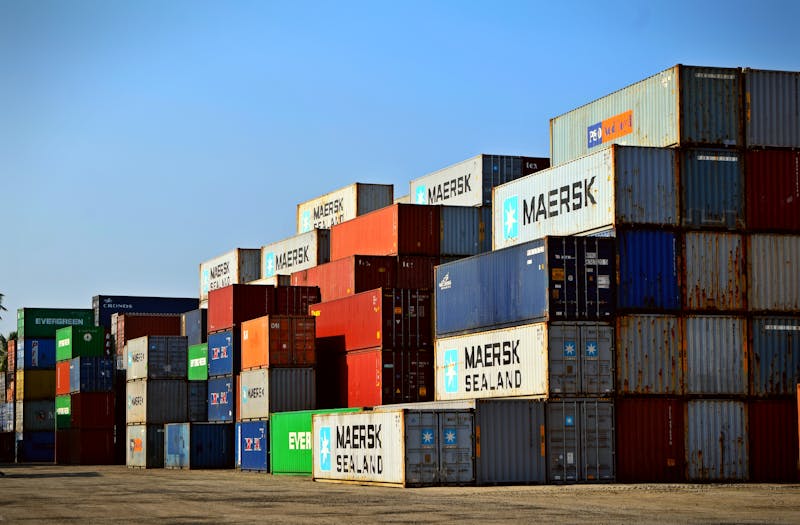
What are KPIs in Logistics?
KPIs are key performance indicators considered a quantitative tool businesses use to gauge the performance of their logistics department. KPIs represent the idea of business goals sticking to industrial benchmarks by measuring various metrics, most of which are linked with purchasing, warehousing, transportation, order fulfillment, and finance.
KPIs in logistics are vital because they translate complex operational data into actionable insights. They help businesses track progress towards their goals and also provide a clear framework for enriching the efficiency of logistics systems.
Here are some notable and suggested KPIs for monitoring logistics performance:
KPI | Description |
On-time Delivery (OTD) | Measures the percentage of shipments delivered on or before the promised date. |
Order Fulfillment Accuracy | Tracks how accurately orders are picked and delivered to customers. |
Inventory Turnover Ratio | Indicates the number of times inventory is sold or used over a specific period. |
Transport Costs per Unit | Measures the average transportation cost to deliver a single unit. |
Warehouse Space Utilization | Evaluates how warehouse space is being utilized for storage. |
Lead Time from Supplier | Measures the time it takes for suppliers to deliver goods after an order is placed. |
Return Rate | Tracks the percentage of orders that are returned by customers. |
Cost per Mile | Evaluates the transportation costs per mile driven which helps to identify areas for cost optimization. |
Top 15 KPIs to Consider for Monitoring Logistics
Here, we’ve compiled the top 15 KPIs to note down and follow for monitoring logistics to help you optimize operations and reduce inefficiencies:
1. On-Time Delivery (OTD)

On-time delivery is more than a number, in fact, it’s a promise to your customers. This KPI tracks the percentage of shipments delivered by the promised date and it portrays the efficiency of your logistics process. Late deliveries can harm customer relationships and tarnish your reputation.
Monitoring OTD helps identify bottlenecks in the supply chain, such as delays in transportation or order processing. Consistently high OTD rates exemplify that your logistics operations are well-oiled and reliable. Concentrate on optimizing transportation routes, improving warehouse operations, and aligning order schedules to ensure you deliver on time, every time.
2. Perfect Order Rate
A perfect order rate is not only about metrics as it is also about creating exceptional customer experiences. This KPI measures the percentage of orders delivered without any issues: no delays, damages, or incorrect items. A high perfect order rate shows that your logistics processes, from order picking to last-mile delivery, are working seamlessly. Errors here can lead to costly returns and unhappy customers.
Regularly reviewing and refining order accuracy, packaging, and shipping methods assures that each delivery meets expectations. Striving for perfection might seem ambitious, but it’s what separates great logistics operations from the rest.
3. Transportation Cost per Unit
Transportation cost per unit is a direct consideration of how smartly your logistics operate. It calculates the expense of shipping a single product, helping you understand where your money is going. This metric can highlight inefficiencies like underutilized vehicles, poor route planning, or excessive fuel consumption. Reducing transportation costs without compromising delivery quality is the ultimate goal.
Businesses can streamline operations and cut unnecessary expenses by using technology like route optimization software and fleet management tools. A lower transportation cost per unit improves profitability and also makes your products more competitive in the market.
4. Inventory Turnover Ratio

The inventory turnover ratio is a window into how well you are managing stock. It measures how often your inventory is sold and replaced over a specific period. A high turnover indicates strong sales and efficient stock management, while a low turnover could mean overstocking or slow-moving goods. This KPI helps you balance inventory levels to avoid tying up capital in unsold products. Use it to refine your purchasing and sales strategies, ensuring that your shelves are filled with what customers actually want. Effective inventory turnover is the smartest key to keeping operations lean and profitable.
5. Order Fulfillment Cycle Time
Order fulfillment cycle time is all about speed and efficiency. It tracks how long it takes to process and deliver an order, from the moment it’s placed to when it arrives at the customer’s door. This metric is a vital measure of how well your logistics and supply chain teams work together. Longer cycle times can frustrate customers and harm your reputation, while shorter ones can delight and retain them. By identifying delays, whether in picking, packing, or shipping, you can implement solutions to streamline processes. Faster fulfillment doesn’t just please customers; it also boosts revenue.
6. Warehousing Cost per Order
Warehousing costs can quickly add up, especially when not properly managed. This KPI calculates the total expenses of running a warehouse: labor, utilities, storage, and equipment divided by the number of orders fulfilled. It’s a vital measure of efficiency. High costs per order might point to underutilized space, inefficient workflows, or overstaffing. Handling these issues with better space utilization, automated systems, or smarter scheduling can enormously reduce costs. You free up resources to reinvest in other areas of your business by keeping warehousing expenses in check.
7. Dock-to-Stock Cycle Time
Dock-to-stock cycle time measures how long it takes for goods to move from the receiving dock to storage or production. A short cycle time confirms that inventory is available for orders or manufacturing as quickly as possible. This KPI highlights inefficiencies in your receiving and stocking processes, like delays in inspections or misplaced items. Streamlining these steps, whether through better staff training or automation, can improve all-around efficiency. When your dock-to-stock time is optimized, you reduce the risk of stockouts and keep operations running smoothly.
8. Shipping Accuracy
Shipping accuracy is more than just getting the right products to the right customers as it’s more about trust. This KPI measures how often shipments are delivered correctly, with the right items, quantities, and packaging. Mistakes here lead to returns, increased costs, and dissatisfied customers.
Regular audits and process improvements, like barcode scanning and employee training, can enormously boost accuracy. High shipping accuracy reduces waste and also builds confidence with your customers by reinforcing your reputation for reliability.
9. Inventory Carrying Cost
Inventory carrying cost measures the expenses associated with holding stock, including storage, insurance, depreciation, and obsolescence. This KPI gives you a clear picture of how much it costs to keep products on hand.
High carrying costs can tie up resources that could be used elsewhere. You can reduce these expenses by optimizing inventory levels, using just-in-time methods, or improving demand forecasting. Managing carrying costs effectively helps you maintain a lean operation and improves overall profitability.
10. Freight Cost per Mile
Freight cost per mile is a vital metric for transportation efficiency. It calculates the cost of moving goods per mile, helping you identify where you might be overspending. This KPI is pretty useful for long-haul deliveries, where fuel consumption and route planning play significant roles. You can bring down costs by optimizing delivery routes, consolidating shipments, or investing in fuel-efficient vehicles. A lower freight cost per mile boosts your bottom line and also makes your logistics operation more sustainable.
11. Lead Time from Supplier
Lead time from the supplier measures how long it takes for a supplier to deliver goods after an order is placed. This KPI is integral for strengthening smooth operations and avoiding stockouts. Delays in lead time can disrupt your supply chain plus they also impact production and customer satisfaction.
Regular communication with suppliers, better forecasting, and building buffer stocks can help minimize lead times. Shorter lead times mean greater agility in responding to market demands, giving your business a competitive edge.
12. Unshipped Order Percentage
Unshipped orders are a red flag for inefficiencies in your supply chain. This KPI estimates the percentage of orders that remain unfulfilled due to stock shortages or logistical issues. High percentages indicate voids in inventory management or procurement processes. You can address underlying problems, such as inaccurate demand forecasting or delays in restocking by closely monitoring this metric. Reducing unshipped orders promises that customers receive their products on time.
13. Customer Order Cycle Time
Customer order cycle time is the total time it takes for an order to go from placement to delivery. This KPI directly impacts customer satisfaction, as shorter cycle times often lead to happier customers. Delays can occur at various points, from order processing to last-mile delivery. Identifying and resolving these bottlenecks promises a smoother and faster experience for your customers. An optimized cycle time doesn’t just enhance satisfaction, it also boosts repeat business.
14. Return Rate
The return rate measures the percentage of products returned by customers. While returns are a normal part of business, a high return rate often signals issues with product quality, packaging, or shipping. This KPI helps you pinpoint and regulate these problems, reducing unnecessary costs and improving customer satisfaction. You can minimize returns and maintain a better bottom line by analyzing return reasons and implementing corrective measures.
15. Storage Space Utilization

Storage space utilization measures how smartly and strategically warehouse space is being used. Poor utilization leads to wasted resources and higher operating costs. You can identify underutilized areas and reorganize storage layouts to maximize efficiency by tracking this KPI. Investing in vertical storage or automation can further improve space usage. Efficient space utilization reduces costs plus it also enriches workflow which makes it easier to manage inventory and fulfill orders.
How to Choose the Right KPIs?
Selecting the right Key Performance Indicators (KPIs) for logistics is vital to make sure that your business tracks what truly matters. With the vast number of KPIs available, selecting the most relevant ones can feel overwhelming. Here is a simple, structured approach to help you choose the right KPIs for your business:
1. Streamline KPIs with Business Goals
Start by defining your company’s overarching objectives. Ask yourself:
- Are you aiming to reduce transportation costs?
- Do you want to improve customer satisfaction?
- Is streamlining inventory management a priority?
Your chosen KPIs should directly support these goals. For example, if your goal is faster delivery, KPIs like On-Time Delivery or Order Fulfillment Cycle Time should be your focus
2. Keep KPIs SMART
SMART KPIs are Specific, Measurable, Achievable, Relevant, and Time-bound. Avoid vague metrics that are hard to interpret or track. For example, instead of “Improve shipping,” use a KPI like “Reduce shipping costs by 10% within the next quarter.” SMART KPIs guarantee clarity and actionable insights.
3. Differentiate Leading and Lagging Indicators
- Leading Indicators predict future performance and help make proactive adjustments. Example: Supplier Lead Time.
- Lagging Indicators measure outcomes and provide insights into past performance. Example: Return Rate.
You can monitor your logistics operations comprehensively by balancing both.
4. Prioritize Simplicity and Relevance
Choose KPIs that are simple and easy to understand across your organization. Avoid overloading your team with too many metrics; stress on 10-20 key ones that have the most impact. Start small and add more KPIs as needed, providing they remain relevant to your evolving business needs.
5. Provide Data Integrity
Accurate data is the backbone of effective KPI tracking. Invest in tools that provide real-time and reliable data. If your data is scattered across systems or outdated, your KPIs will lack credibility. Using integrated platforms or business intelligence tools can help centralize and clean your data for accurate measurement.
6. Continuously Monitor and Optimize
KPIs aren’t static. Regularly review their relevance and performance. Are they helping you achieve your goals? If not, adjust or replace them. Concentrate on continuous improvement, using KPI insights to refine your processes and adapt to changing market demands.
You can choose KPIs that provide actionable insights and drive continuous improvement by following these steps. Remember, that the right KPIs are more than just metrics, in fact, they are tools to elevate your logistics operations to the next level.
Tips to Implement to Choose the Right KPIs
Having the right KPIs for your logistics operations isn’t just about picking metrics; it’s about connecting them with your business goals and assuring that they provide actionable insights. Here are some tips to help you select and implement KPIs smartly:
1. Establish Clear Objectives
Before immersing yourself into KPIs, define what you want to achieve. Are you looking to improve delivery times, reduce costs, or enhance customer satisfaction? Setting clear and measurable goals promises that you’re tracking metrics that actually matter. For example, if reducing late deliveries is a priority, focus on KPIs like On-Time Delivery (OTD) or Order Fulfillment Cycle Time.
2. Keep KPIs Relevant
Select KPIs that directly impact your operations and connect seamlessly with your long-term strategy. Avoid tracking too many metrics as this can overwhelm your team and dilute focus. Instead, start with a handful of meaningful KPIs and expand as needed. For example, a warehouse-focused business might prioritize Inventory Turnover and Storage Space Utilization.
3. Prioritize Simplicity
The best KPIs are simple and easy to understand. Complex metrics can confuse teams and make it harder to take action. A simple KPI like Transportation Cost per Unit provides clear insight and is easier to track compared to overly detailed metrics.
4. Ensure Data Accuracy
KPIs are only as good as the data behind them. Invest in systems and tools that promote accurate and real-time data collection. This might involve upgrading your logistics software, integrating tracking tools, or training employees to maintain data integrity. Reliable data makes sure that your KPIs reflect the true state of your operations.
5. Balance Leading and Lagging Indicators
Use a mix of leading KPIs (predict future performance) and lagging KPIs (evaluate past results). For example, Lead Time from Supplier (leading) helps predict potential delays, while Return Rate (lagging) analyzes past product issues. This balance makes sure that you can proactively deal with challenges while reviewing past performance.
6. Monitor KPIs Consistently
Tracking KPIs isn’t a one-and-done activity. Regular monitoring helps you to identify trends, make timely adjustments, and ensure that operations stay on track. Schedule periodic reviews to assess progress and refine your strategies as needed.
7. Involve Your Team
Your employees play a vital role in achieving KPI goals. Involve them in the selection process to promise buy-in and understanding. When teams are part of the decision-making, they’re more likely to stay committed to the goals.
8. Use Technology
Use tools like logistics management software, dashboards, and automation to simplify KPI tracking and reporting. Advanced technology provides real-time insights which makes it easier to identify bottlenecks and opportunities for improvement.
9. Stay Flexible
Your business priorities and market conditions can change, so your KPIs should evolve too. Regularly understand whether your metrics are still relevant and adjust them to portray shifting goals or industry trends.
10. Focus on Actionable Insights
The purpose of KPIs is to drive action and not just gather data. Go with metrics that highlight areas where you can make improvements. For example, if Freight Cost per Mile is high, you can explore route optimization or better fleet management.
Do's and Don'ts for Effective KPI Implementation
Implementing Key Performance Indicators (KPIs) effectively requires a strategic alignment and consistent evaluation. Here are the key do’s and don’ts to ensure your KPIs drive meaningful outcomes:
KPI Do’s
- Prioritize Key Processes and Goals
Focus on KPIs that streamline vital processes and align with your organization’s priorities. These should directly contribute to your long-term objectives. - Align with Business Priorities
Ensure your KPIs are connected to core business goals, such as improving delivery times, reducing costs, or enhancing customer satisfaction. This alignment keeps teams concentrated on what matters most. - Keep KPIs Clear and Achievable
Choose KPIs that are straightforward and realistic. Simple metrics make it easier to track progress and take actionable steps for improvement. - Analyze Performance Indicators
Regularly assess the relevance of your chosen KPIs. Use data to understand trends, identify issues, and refine strategies for better outcomes. - Promote Productivity
Select KPIs that encourage teams to work smarter and not harder. Metrics should highlight areas where productivity can be improved without overwhelming your staff.
KPI Don’ts
- Avoid Reinventing the Wheel
Don’t waste time creating entirely new standards. Instead, start by researching industry benchmarks and adapting them to your organization’s needs. - Skip Staff Engagement
Never implement new KPIs without obtaining input and approval from your team. When employees are involved in the process, they’re more likely to welcome the goals and stay devoted towards their accomplishments. - Overcomplicate Your KPIs
Steer clear of complex or vague metrics. Keep your KPIs concrete and actionable to avoid confusion and make sure that everyone is on the same page. - Ignore Flexibility
Don’t make KPIs rigid because business needs evolve, and your metrics should adapt accordingly to remain relevant and effective. - Stop at the Benchmark
Meeting a KPI benchmark isn’t the end goal. Once you’ve achieved or exceeded a target, raise the bar and aim for continuous improvement. - Focus Only on Minimum Standards
Don’t settle for merely meeting minimum KPI expectations. Strive for acceptable performance across all metrics and look for opportunities to exceed standards consistently.
The Bottom Line
KPIs are indeed powerful tools that help logistics professionals transform operations, cut costs, and improve customer experiences. When the right KPIs are in place, businesses gain a clearer picture of their logistics performance. They uncover inefficiencies, and make smarter as well as data-driven decisions to drive ongoing improvements.
Beyond numbers, KPIs provide actionable insights that can fine-tune everything from warehouse workflows to customer service strategies. They optimize processes and also enhance agility and customer satisfaction which eventually sets the stage for sustainable growth.
In the present logistics landscape, KPIs are more than metrics, they are the bedrock for achieving operational excellence and staying ahead of the competition.
FAQ’s
Setting up logistics KPIs involves connecting metrics with your business goals and supply chain priorities. Start by identifying key areas such as transportation, warehousing, inventory management, and customer service. Define clear objectives for each area, ensuring they follow the SMART criteria (Specific, Measurable, Achievable, Relevant, and Timely). Use tools like logistics dashboards or inventory management systems to track and visualize these KPIs in real time. Regularly study and refine your KPIs to adapt to changing business needs and improve operational impact.
Creating a logistics KPI program starts with a profound study into your current operations. Map out your supply chain processes to decode key pain points and opportunities for improvement. Collaborate with stakeholders, including suppliers and employees, to understand their perspectives.
Choose KPIs that directly address these issues, such as On-Time Delivery (OTD) or Inventory Turnover and ensure they are simple and actionable. Invest in technology to automate data collection and analysis, enabling real-time insights. Finally, communicate the importance of KPIs across teams and provide training to bring alignment and accountability at every level.
Logistics KPIs play a vital role in improving customer experience by ensuring timely deliveries, accurate orders, and efficient service. Metrics like Perfect Order Rate and Customer Satisfaction (CSAT) provide valuable insights into how well your logistics operations meet customer expectations. Businesses can identify bottlenecks by monitoring these KPIs. They can strategically reduce delivery delays, and enhance product accuracy. This boosts customer trust as well as nurtures loyalty and repeat business. Incorporating customer feedback into your KPI program ensures your logistics strategy remains customer-centric and responsive to growing demands.
About Author
Bhavisha Bhatia
Bhavisha Bhatia is a Computer Science graduate with a passion for writing technical blogs that make complex technical concepts engaging and easy to understand. She is intrigued by the technological developments shaping the course of the world and the beautiful nature around us.

